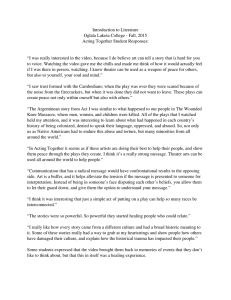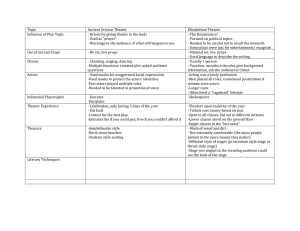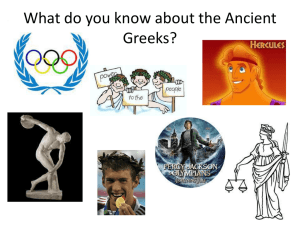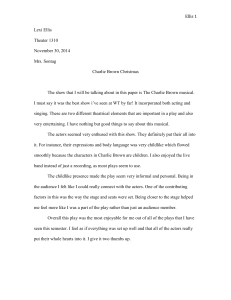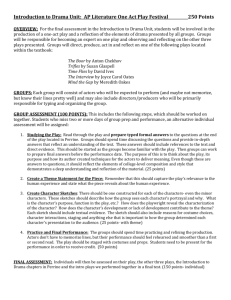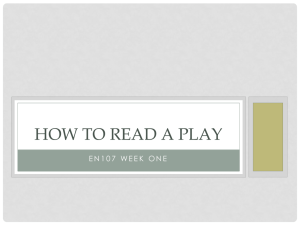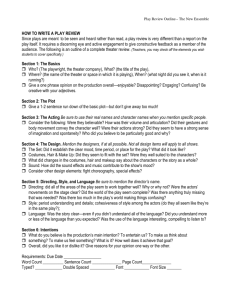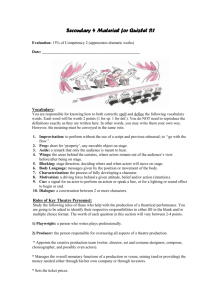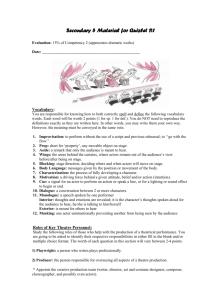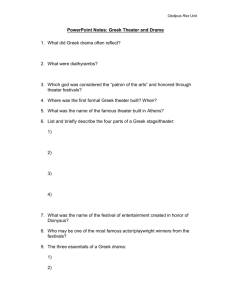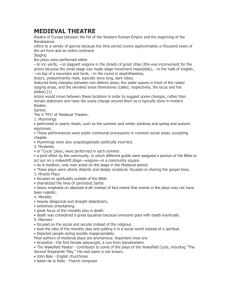File
advertisement
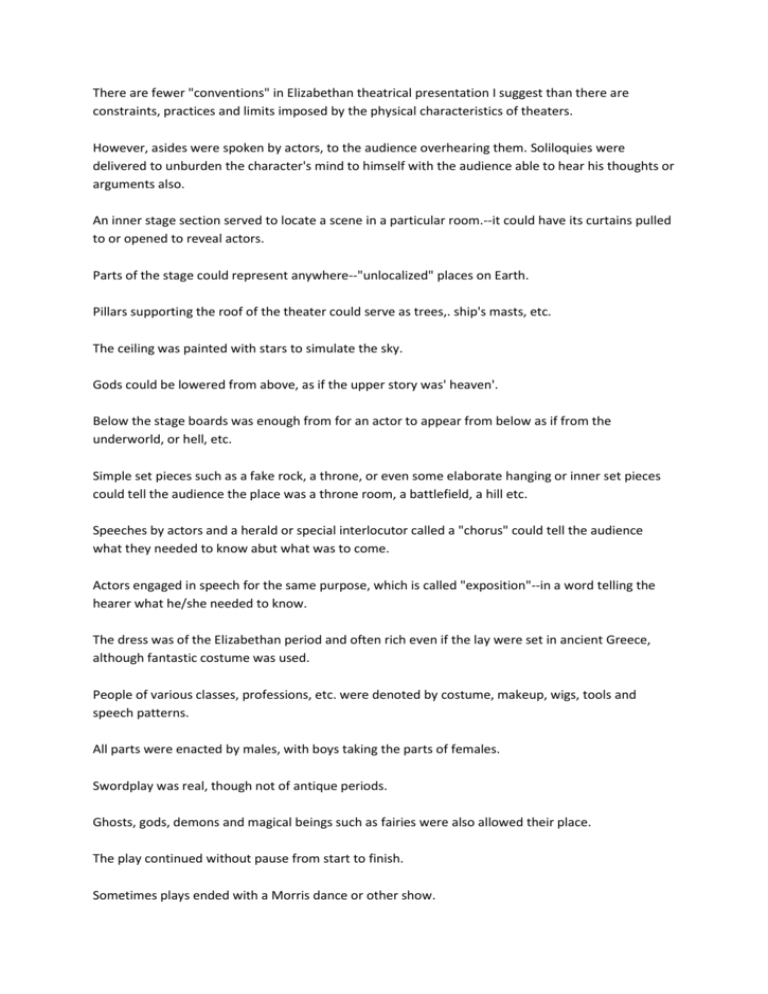
There are fewer "conventions" in Elizabethan theatrical presentation I suggest than there are constraints, practices and limits imposed by the physical characteristics of theaters. However, asides were spoken by actors, to the audience overhearing them. Soliloquies were delivered to unburden the character's mind to himself with the audience able to hear his thoughts or arguments also. An inner stage section served to locate a scene in a particular room.--it could have its curtains pulled to or opened to reveal actors. Parts of the stage could represent anywhere--"unlocalized" places on Earth. Pillars supporting the roof of the theater could serve as trees,. ship's masts, etc. The ceiling was painted with stars to simulate the sky. Gods could be lowered from above, as if the upper story was' heaven'. Below the stage boards was enough from for an actor to appear from below as if from the underworld, or hell, etc. Simple set pieces such as a fake rock, a throne, or even some elaborate hanging or inner set pieces could tell the audience the place was a throne room, a battlefield, a hill etc. Speeches by actors and a herald or special interlocutor called a "chorus" could tell the audience what they needed to know abut what was to come. Actors engaged in speech for the same purpose, which is called "exposition"--in a word telling the hearer what he/she needed to know. The dress was of the Elizabethan period and often rich even if the lay were set in ancient Greece, although fantastic costume was used. People of various classes, professions, etc. were denoted by costume, makeup, wigs, tools and speech patterns. All parts were enacted by males, with boys taking the parts of females. Swordplay was real, though not of antique periods. Ghosts, gods, demons and magical beings such as fairies were also allowed their place. The play continued without pause from start to finish. Sometimes plays ended with a Morris dance or other show. Players spoke prose, poetic prose, verse, and finally blank verse etc., rather than colloquial speech. Lute songs were introduced into the plays. Richer persons sat onstage at right and left, without disturbing the playgoers. And all plays took place in daylight; only later did court theaters use artificial lighting and present plays at night. Real jewels or jewelry might be borrowed. Medieval types were still represented by exaggerated costumes for comedic purposes--a banker, a beggar, a friar being denoted by external devices. Kings wore coronets or crowns. And torches, and even fireworks or artillery were used--a spark from which burned down the original Glove Theater. A flag was hoisted on Bankside beyond the Thames, above the theater, when a play was to be done that day--the color of the banner denoting what sort of play it was going to be.
